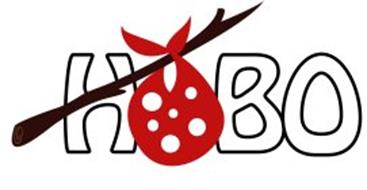

Up to four players can participate in the survival. Hobo: Tough Life is out on PCs and available on Steam, later it should also come out on game consoles. Tramps travel, either via rail or hitchhiking, but they rarely work (and instead often beg). Hoboes travel across the country by hopping onto trains (although other modes of transportation are also acceptable), but crucially they work for their living, performing seasonal labor and taking on odd jobs.

It appears to derive from two words: the German bummer, “a high-spirited, irresponsible person,” and the old English word bum, which has for four centuries been slang for both “a drunk” and “buttocks.” How did hobos travel? 1) “dissolute loafer, tramp,” 1864, American English, from bummer (q.v.) “loafer, idle person” (1855), which is probably from German. Is that vagabond is floating about without any certain direction, driven to and fro while homeless is lacking a permanent place of residence. Instead, the stylebook recommends “homeless people,” “people without housing,” or “people without homes.” Other terms considered disparaging are “vagrant” or “derelict.” What is the difference between being a vagabond and being homeless?Īs adjectives the difference between vagabond and homeless Hitching rides in boxcars along the nation’s railways, these hobos, as they came to be known, carried their few possessions with them and lived a nomadic lifestyle. With no job and no home, men were forced to go to where the jobs were. How did hobos survive during the Great Depression? Bum is a name sometimes given to a beggar or vagrant: someone who tries to bum change from you. This word can also be used to refer to a vagrant, although it’s generally considered offensive or insensitive. Such items should be packaged in paper bags/boxes. Evidence that is wet or that may contain body fluids (blood, semen, etc.) must be air-dried completely. How do you pronounce bindle?Īlways package tubes of blood separately from any other evidence items in a crushproof container. If a microscopic examination is required, then 15-20 representative hairs from the suspect must be submitted to the lab for comparison. Hair found at the scene should be placed in a paper packet and then placed in an envelope. How do investigators package really small items like hair? Tramp is an insulting word for a woman who is thought to have many sexual partners. He wrote about a dozen books on the subject. He was riding the rails, and stowing away on ships starting at the age of 11 and then he began to write about his journeys. His given name is Leon Ray Livingston and he was born in 1872 and he was a lifelong wanderer.

is arguably the most famous hobo in the United States. Hobo culture is alive and well in the United States, but it’s a far cry from the sanitized Halloween-costume version most of us are used to - the patched overalls, the charcoal beard and the red-bandana bindle (that’s a bundle on a stick). Hobo bags are made out of soft, flexible materials and tend to slump, or slouch, when set down. The hobo bag is a style of handbag or purse that is typically large and characterized by a crescent shape, a slouchy posture and a long strap designed to wear over the shoulder. Hobos were migratory workers in the western (perhaps, to be more precise, in the northwestern) parts of the United States. Only two things are “certain” and “known” about hobo: the word was noticed around 1890, and it emerged in American English. Someone came up with the idea: ‘ Honest Observer By Onset‘ as a HOBO acronym. Hobos are also sometimes referred to as vagrants, tramps, or transients, depending on regional preference, and some people use the term “hobo” to refer to a specific type of vagrant homeless person. Is a hobo homeless?Ī hobo is a homeless person who lives a vagrant lifestyle, traveling from place to place. The term bum is an American term that appears during the American Civil War, probably taken from the German slang word bummler, meaning loafer. A bum is irresponsible, shiftless and often an alcoholic. Why are homeless called bums?Ī bum is homeless, he does not travel and does not work. Some say it was an abbreviation of “homeward bound” or “homeless boy”, author Bill Bryson wrote in his 1998 book “Made in America” that it may have come from “Ho, beau!”, a railroad greeting. The term emerged in the American West around 1890, though its origins are hazy. This material is light and can be difficult to see, which increases the chances that it can go missing if not carefully stored. Typically, bindle paper is used for so-called trace evidence such as fibers, hair, paint chips, crystallized or dust-like material such as drugs, or other tiny particles.


 0 kommentar(er)
0 kommentar(er)
